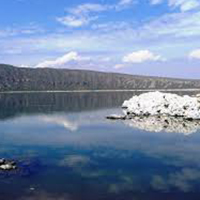Habitat expansion of a tropical chironomid by seasonal alternation in use of littoral and profundal zones

All claims expressed in this article are solely those of the authors and do not necessarily represent those of their affiliated organizations, or those of the publisher, the editors and the reviewers. Any product that may be evaluated in this article or claim that may be made by its manufacturer is not guaranteed or endorsed by the publisher.
Authors
The consistent warming of tropical lakes at all depths causes rapid development and long persistence of seasonal hypoxia in the hypolimnion, which greatly reduces the biodiversity of hypolimnetic benthic invertebrates. Full mixing of the water column in a typically annual cool-season creates a benthic habitat suitable for invertebrates but offers little time for colonization before the return of anoxia. In Lake Alchichica, Mexico, the endemic midge Chironomus alchichica has evolved a life cycle consisting of reproduction in waters of the littoral zone, which is suboptimal for development, followed by colonization of the hypolimnetic benthic zone during its oxic phase. As shown by the sampling of both littoral and benthic habitats over an annual cycle, the development of Ch. alchichica in the profundal zone is favoured by minimal competition (only one other invertebrate species present) and no significant predation. The rapid maturation of the midge leads to a high density of pupation before the seasonal anoxia.
Edited by
Valeria Lencioni, Head Invertebrate Zoology and Hydrobiology Department, MUSE-Museo delle Scienze, Trento, ItalySupporting Agencies
PAPIIT/UNAM IN219220, PAPIIT/UNAM IN231820, PINCC/UNAM 2020How to Cite

This work is licensed under a Creative Commons Attribution-NonCommercial 4.0 International License.






